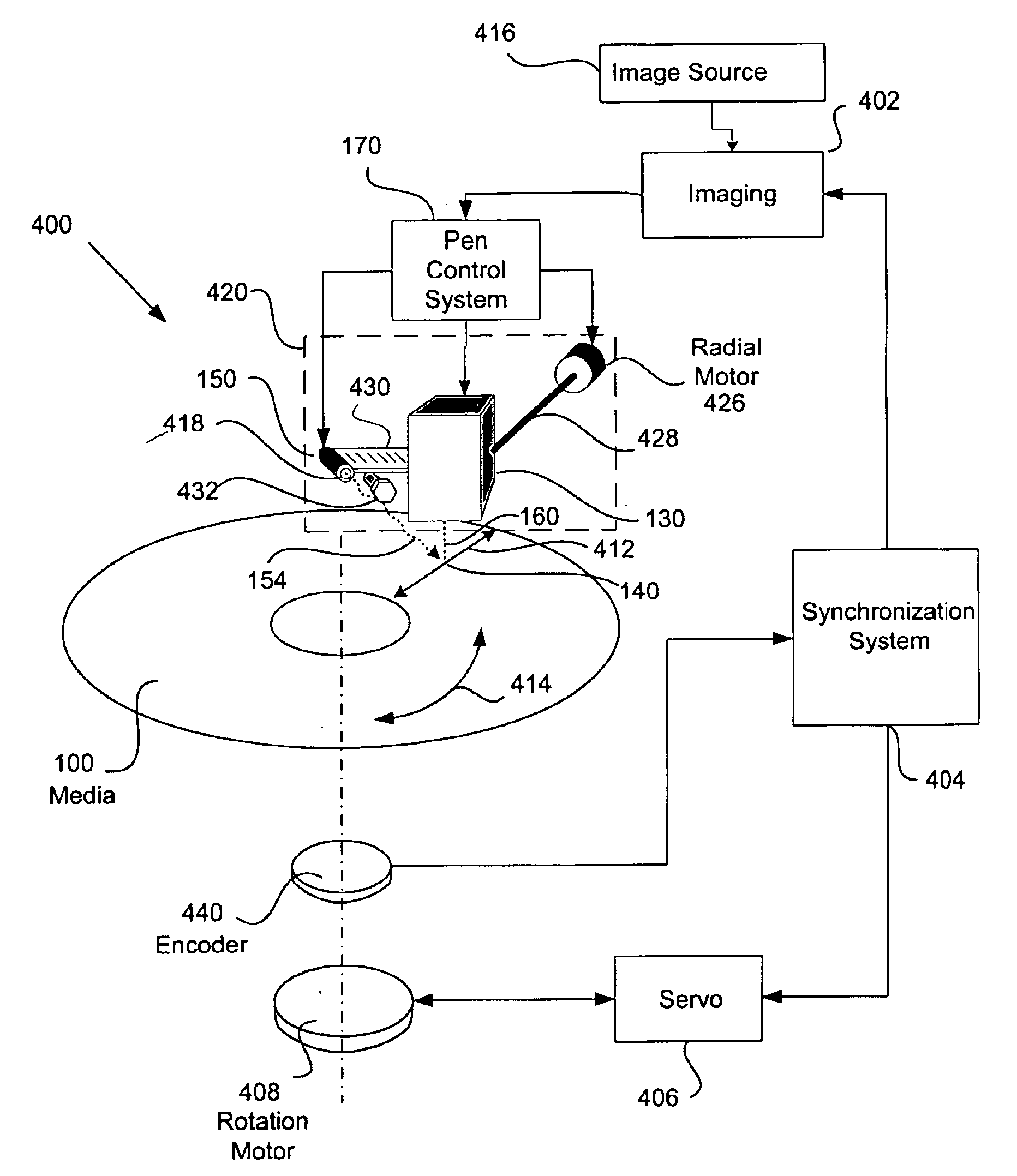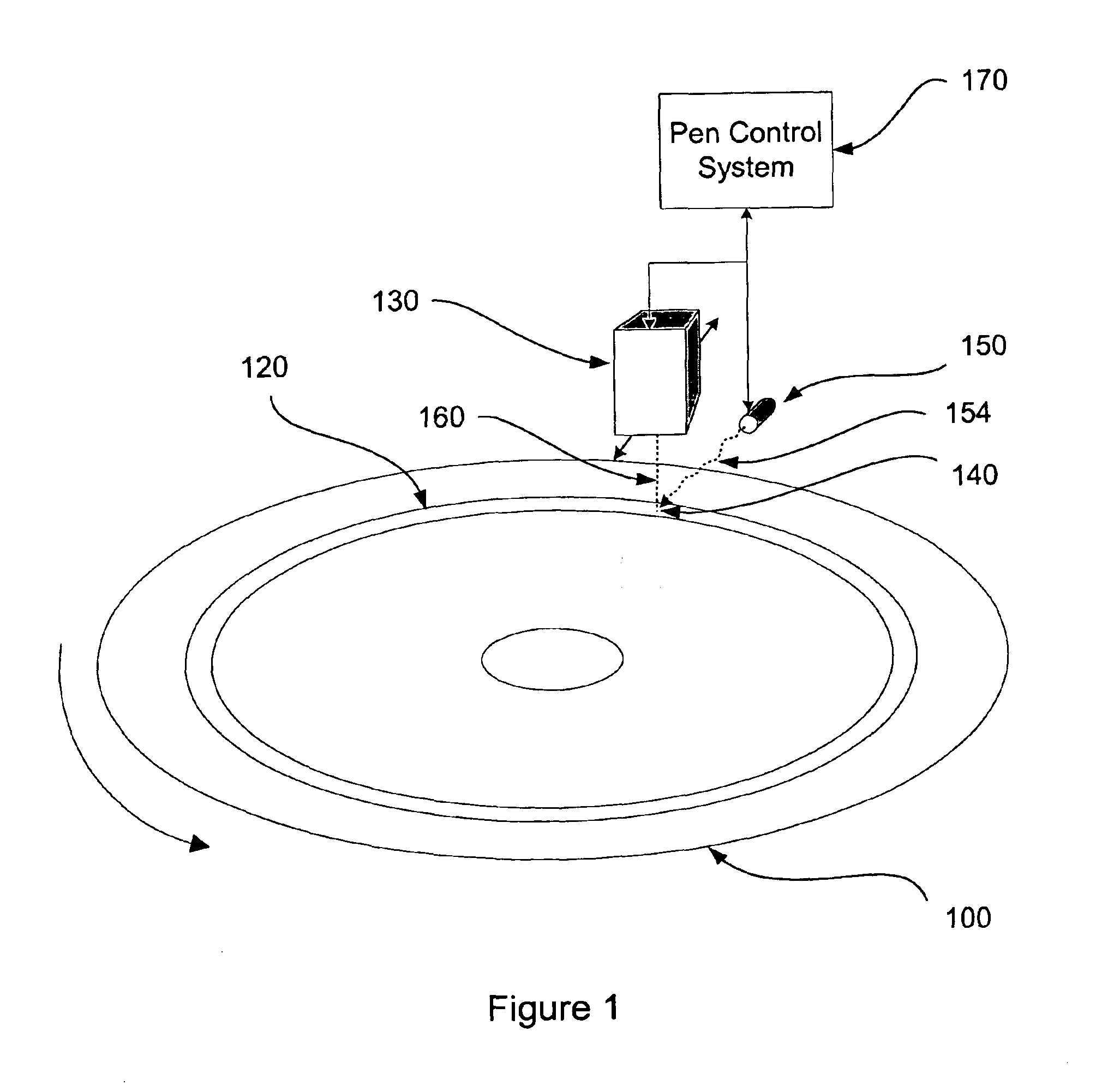Point-of-incidence ink-curing mechanisms for radial printing
a technology of inkcuring mechanism and radial printing, which is applied in the field of point-of-incidence inkcuring mechanism of radial printing, can solve the problems of image distortion, unwelcome excessive heat of irradiance lamps, and higher concentrations of unwelcome toxic outgases, and achieve the effect of reducing the impact of hea
- Summary
- Abstract
- Description
- Claims
- Application Information
AI Technical Summary
Benefits of technology
Problems solved by technology
Method used
Image
Examples
Embodiment Construction
The present invention will now be described in detail with reference to a few preferred embodiments as illustrated in the accompanying drawings. In the following description, numerous specific details are set forth in order to provide a thorough understanding of the present invention. It will be apparent, however, to one skilled in the art, that the present invention may be practiced without some or all of these specific details. In other instances, well known process steps and / or structures have not been described in detail in order to not unnecessarily obscure the present invention.
For the scope of this invention, the terms “CD” and “media are intended to mean all varieties of optical recording media discs, such as CD-R, CD-RW, DVD-R, DVD+R, DVD-RAM, DVD-RW, DVD+RW and the like.
The ink curing mechanisms described herein may be integrated within any suitable radial printer. Several embodiments of radial printers are further described in above reference U.S. Pat. No. 6,264,295, enti...
PUM
| Property | Measurement | Unit |
|---|---|---|
| volume | aaaaa | aaaaa |
| energy | aaaaa | aaaaa |
| focusing energy | aaaaa | aaaaa |
Abstract
Description
Claims
Application Information
 Login to View More
Login to View More - R&D
- Intellectual Property
- Life Sciences
- Materials
- Tech Scout
- Unparalleled Data Quality
- Higher Quality Content
- 60% Fewer Hallucinations
Browse by: Latest US Patents, China's latest patents, Technical Efficacy Thesaurus, Application Domain, Technology Topic, Popular Technical Reports.
© 2025 PatSnap. All rights reserved.Legal|Privacy policy|Modern Slavery Act Transparency Statement|Sitemap|About US| Contact US: help@patsnap.com



